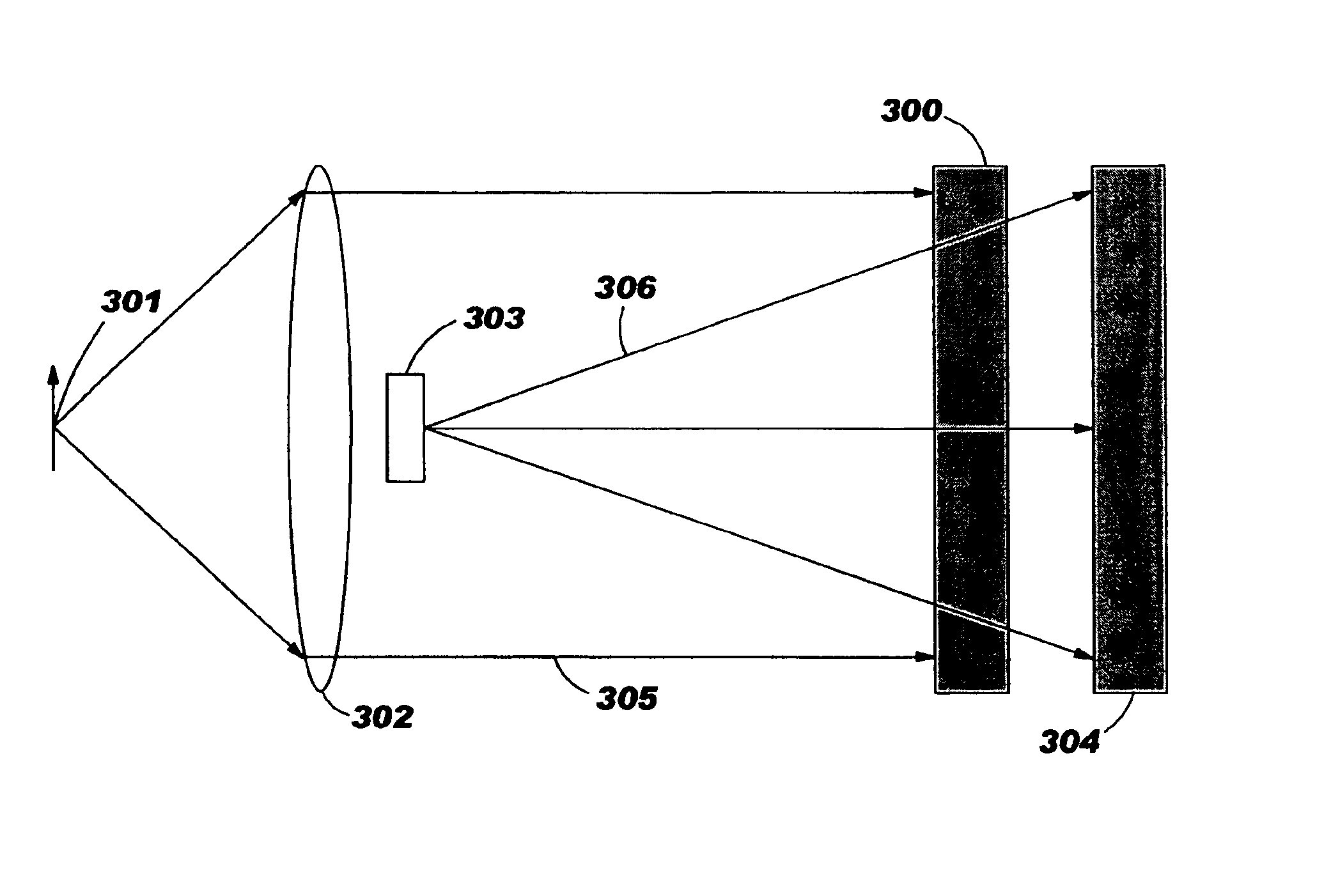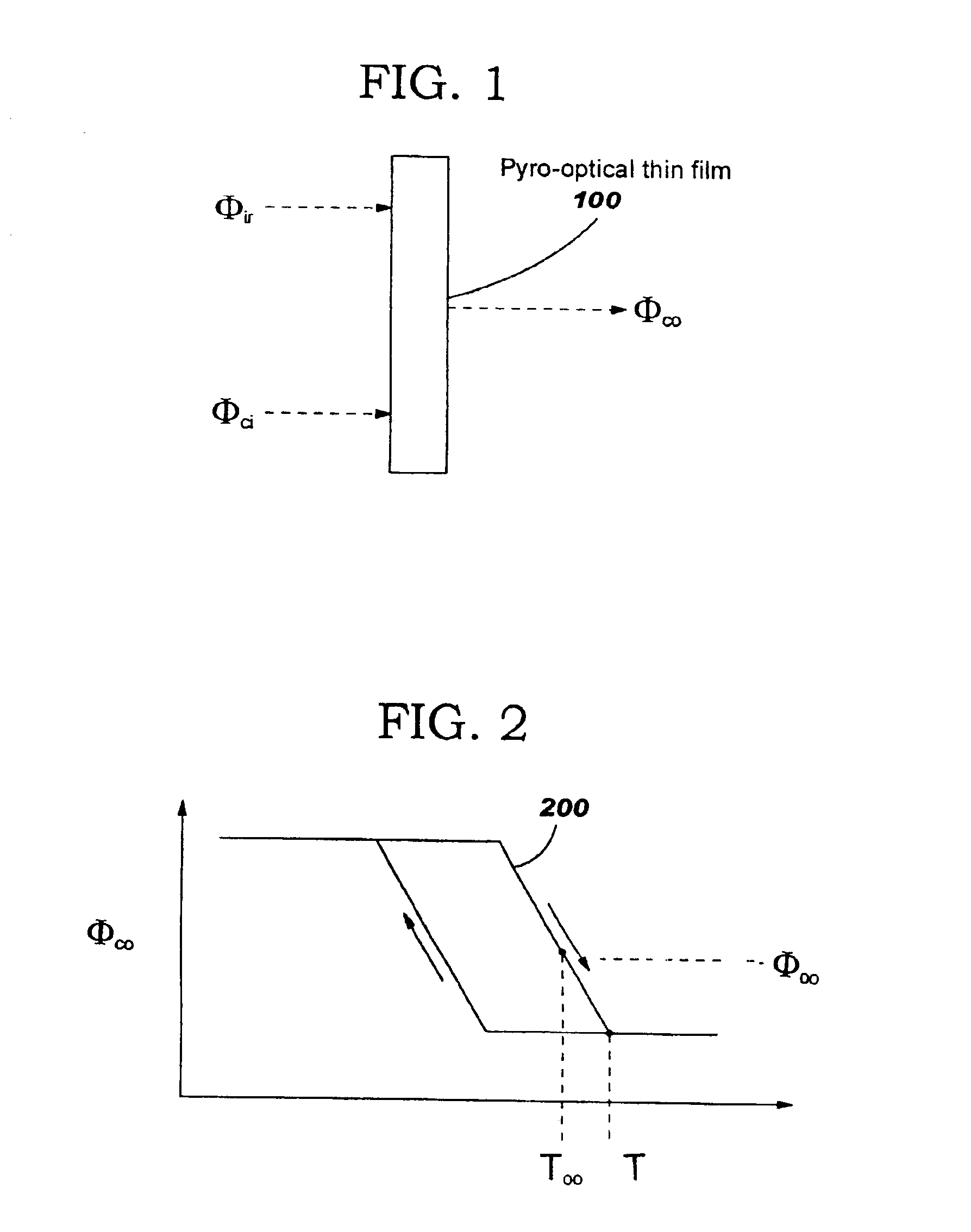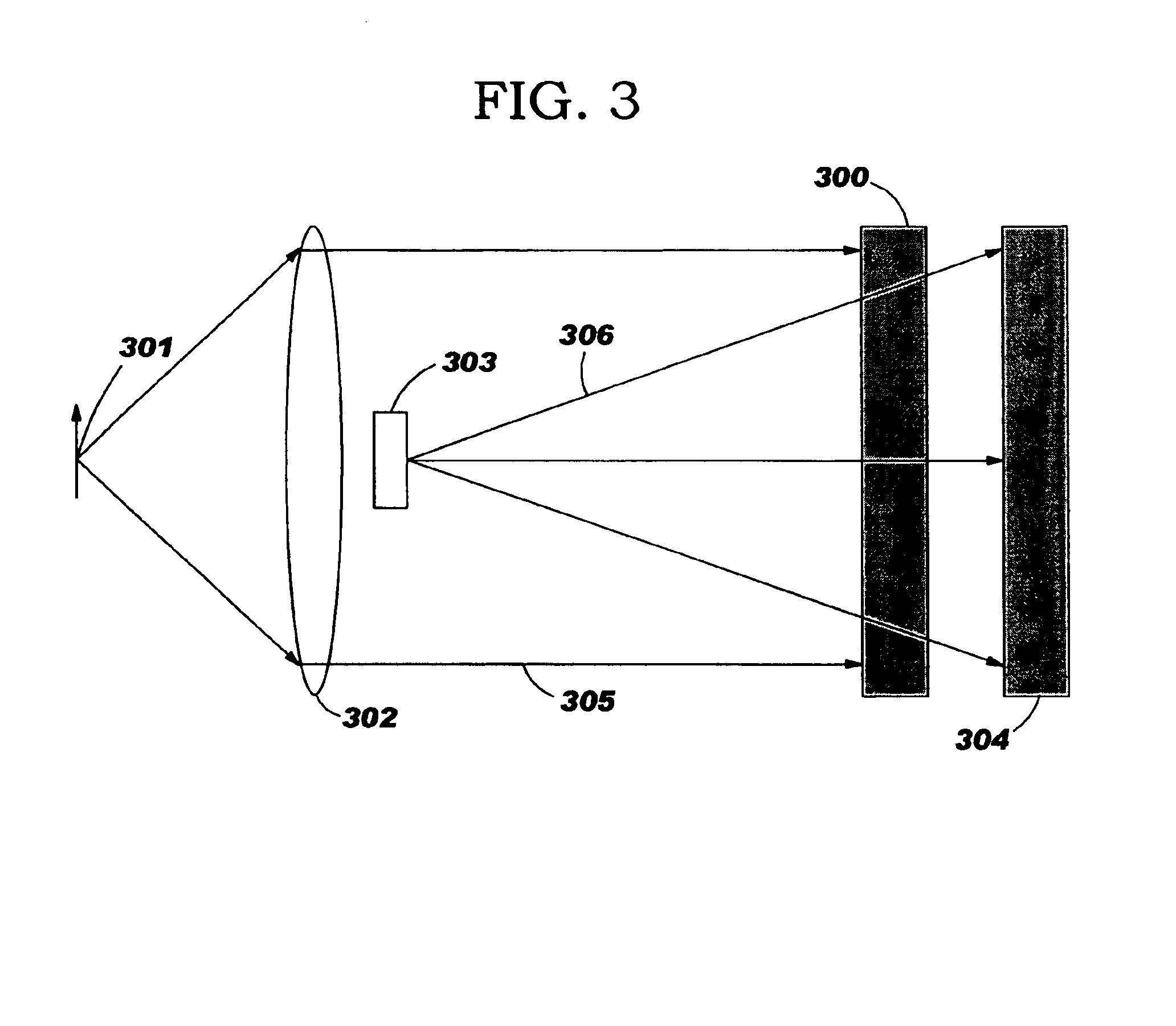Radiation sensor with photo-thermal gain
a radiation sensor and gain technology, applied in the field of microsensors, can solve problems such as the change in the transmissivity or reflectivity of the second source interrogation carrier beam
- Summary
- Abstract
- Description
- Claims
- Application Information
AI Technical Summary
Benefits of technology
Problems solved by technology
Method used
Image
Examples
Embodiment Construction
[0020]We describe a radiation sensor which contains an internal photonic carrier beam to monitor extremely small variations in the temperature of a microplatform. The reflection of transmission of the photonic carrier beam with respect to a microplatform is monitored by a detector. The present invention uses microoptical-electromechanical-systems MOEMS technology to form a single microplatform or an array of microplatforms for detecting low level radiation.
[0021]FIG. 3 is the block diagram of a radiation sensor system constructed in accordance with the present invention. During operation for the application of thermal radiation detection, emission from scene 301 is received by structure 302 and focused on the microplatform 300. Structure 302 contains collection optics and also may contain a chopper in the beam of low level radiation 305. The beam 305 in FIG. 3 corresponds to the incident low level beam Φir of FIG. 1. The chopper acting in cooperation with gating circuits made part o...
PUM
 Login to View More
Login to View More Abstract
Description
Claims
Application Information
 Login to View More
Login to View More - R&D
- Intellectual Property
- Life Sciences
- Materials
- Tech Scout
- Unparalleled Data Quality
- Higher Quality Content
- 60% Fewer Hallucinations
Browse by: Latest US Patents, China's latest patents, Technical Efficacy Thesaurus, Application Domain, Technology Topic, Popular Technical Reports.
© 2025 PatSnap. All rights reserved.Legal|Privacy policy|Modern Slavery Act Transparency Statement|Sitemap|About US| Contact US: help@patsnap.com



